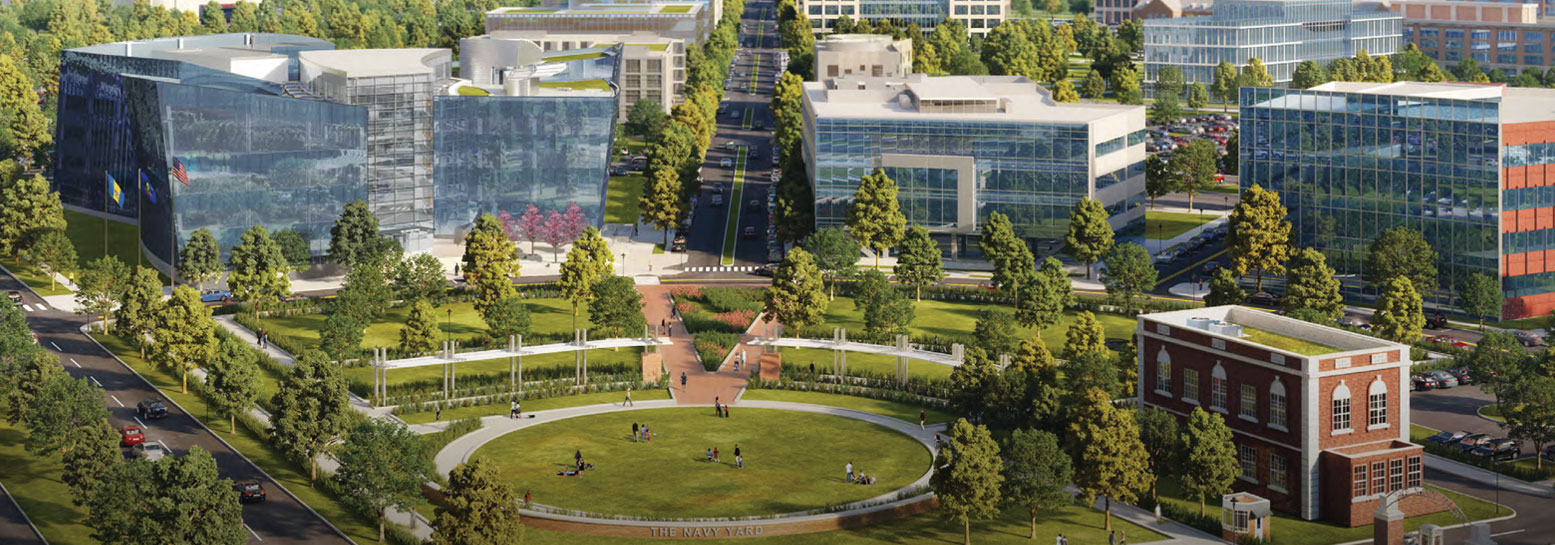The Navy Yard unveils new addition to Philly’s first energy “microgrid”

The Navy Yard can now power itself with a new $11 million natural gas-fired peaker plant designed to keep the growing commercial district lit and live even in emergencies, Hidden City’s Michael Bixler reports. “South Philadelphia’s burgeoning city within a city utilizes one of the largest private energy microgrids in the country,” Bixler writes, servicing its current population of 150 companies and 13,500 employees, including URBNs fashionable minions, the bakers behind Philly’s own TaskyKakes and a growing horde of pharmaceutical industry lab coats. “As redevelopment of the 1,200- acre industrial and office campus surpasses $1 billion in public and private investment, so does the demand for power. The need for energy is expected to rise dramatically as the Navy Yard grows from 7.5 million square feet of active real estate to the projected 20 million square feet of development at full build-out,” writes Bixler. A microgrid is a small, independent energy grid that can power a complex like the Navy Yard, a neighborhood or any other entity that wants to keep humming in a time of crisis, when a central power grid is down. With climate change making natural disasters more frequent, cities are increasingly turning to microgrids as a resilience measure. Case in point: in the aftermath of Hurricane Maria, NPR reports that a third of residents in Puerto Rico still lack electricity four months later. Peco and other energy providers are pitching in as FEMA pulls back support. Meanwhile back in Philadelphia, the city’s draft clean energy plan recommends large facilities like hospitals follow in the Navy Yard’s path to develop microgrids of their own.
Can the city’s new sliding scale water bills help solve a crisis that’s exacerbated by poverty and minimal wage growth? WURD’s Charles D. Ellison, contributing to the Philadelphia Citizen, argues that forgiving current water bill debt for low-income residents might provide immediate relief, but doesn’t address a cycle of debt due to rising water rates, weak wage growth, and the city’s crumbling infrastructure. As Philly moves forward with the Tiered Assistance Program, Ellison points to earlier efforts in peer cities, citing a 2013 National League of Cities five-city pilot testing a program in other cities with large concentrations of “black, brown and financially strapped residents.” The findings were reasonably positive, with participants witnessing drops in outstanding water balances and fewer service shut-offs. For Philadelphia, the solution may also lie in state-level fixes for aging infrastructure; the American Society of Civil Engineers gave Pennsylvania a C- on its Infrastructure Report Card, and the National Resources Defense Council ranked the state’s drinking water as the third worst in the nation.
Hub of Hope, a new day center for the homeless at Suburban Station opens Wednesday, WHYY News’ Nina Feldman reports. A joint initiative run by Project HOME, SEPTA, and the city, the 11,000-square-foot facility located underneath the Municipal Services Building includes a health clinic, social services, and basic amenities such as laundry and showers, and a warm place for respite. The center will provide free coffee and a place to sleep. Philabundance will provide meals there on Fridays and weekends. Notably, Hub of Hope does not require people to sign up for programs or get extensive help to use its services. At the ribbon-cutting ceremony Tuesday, Mayor Kenney said that the center was an important step in addressing homelessness and bringing people out of poverty but not a solution. “We still need more affordable homes and jobs,” he said.
Missed last week’s Citizens Planning Institute graduation? Fret not, PhillyCAM has the whole thing on video. You can also see pictures of the ceremony and snapshots of the 2017 cohort on CPI’s facebook here.
Speaking of active citizenship, the city hosted the first public meeting for the Upper Northwest District 2035 planning process Monday, Jake Blumgart reports. More than 350 people came out to talk about the future of a section of the city that is one of its most racially integrated and architecturally impressive, encompassing Mount Airy, Germantown, and Chestnut Hill. As the area faces new development pressures in some areas and continuing divestment in others, residents called for more economic development on Chelton Avenue and Germantown Avenue south of Mount Airy.
WHYY is your source for fact-based, in-depth journalism and information. As a nonprofit organization, we rely on financial support from readers like you. Please give today.






